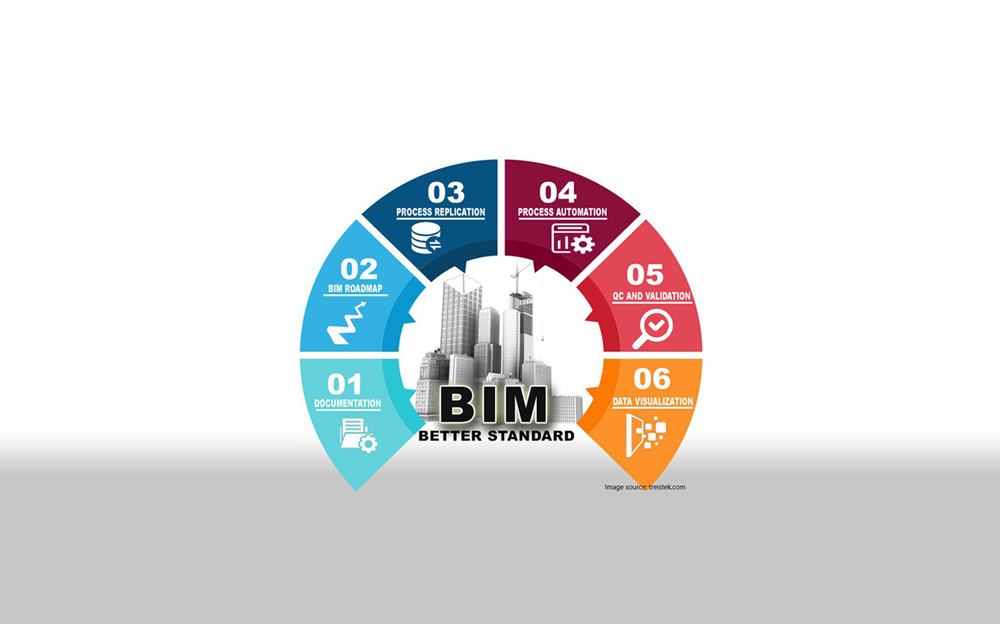
Australia is actively implementing BIM policy changes across its states to enhance construction project efficiency, reduce costs, and improve overall project outcomes. The implementation of BIM policies varies from state to state, with each adopting strategies suited to their specific needs and priorities. Here’s a detailed look at how major Australian states are progressing in their BIM policy implementation:
New South Wales (NSW)
1. Digital Engineering Framework:
- Implementation: The NSW Government’s Digital Engineering Framework mandates the use of BIM for major infrastructure projects. This framework sets out guidelines for data standards, processes, and the integration of digital engineering practices.
- Progress: Transport for NSW (TfNSW) and the Sydney Metro project are significant adopters, using BIM for planning, design, construction, and asset management to enhance project coordination and efficiency.
2. Transport for NSW (TfNSW):
- Implementation: TfNSW requires BIM for all major transport projects.
- Progress: Projects like the Sydney Metro have showcased the benefits of BIM in managing complex construction and operational phases, improving project delivery.
Victoria
1. Victorian Digital Asset Strategy (VDAS):
- Implementation: The VDAS, launched by the Office of Projects Victoria (OPV), provides a comprehensive framework for using digital engineering, including BIM, across government projects.
- Progress: The strategy is being actively used to ensure that digital information is effectively managed throughout the asset lifecycle. Major infrastructure projects like the Level Crossing Removal Project are using BIM to improve design coordination and reduce construction risks.
Queensland
1. Queensland Government BIM Mandate:
- Implementation: The mandate requires BIM for government construction projects exceeding $50 million.
- Progress: This policy aims to improve project outcomes, reduce costs, and enhance asset management. The implementation is ongoing, with several large projects adopting BIM to streamline processes.
2. Building Queensland:
- Implementation: Provides guidelines and frameworks for BIM implementation in major projects.
- Progress: Promotes consistency and best practices across the state, helping various projects to achieve better coordination and efficiency.
Western Australia
1. Main Roads Western Australia (MRWA):
- Implementation: MRWA has been an early adopter of BIM for road infrastructure projects.
- Progress: The use of BIM has improved design accuracy and construction efficiency in road projects.
2. Government BIM Guidelines:
- Implementation: Developing BIM guidelines to standardize BIM use across public sector projects.
- Progress: These guidelines aim to ensure consistent practices among all stakeholders, enhancing project delivery.
South Australia
1. Department of Planning, Transport and Infrastructure (DPTI):
- Implementation: Promoting BIM use in public infrastructure projects.
- Progress: Focuses on improving project coordination and lifecycle management, with ongoing efforts to integrate BIM in more projects.
2. South Australian Government BIM Policy:
- Implementation: Outlines requirements for BIM implementation in government projects.
- Progress: Aims to enhance productivity and reduce costs, with the policy gradually being adopted in various projects.
Tasmania
1. Department of State Growth:
- Implementation: Exploring BIM implementation for transportation and infrastructure projects.
- Progress: In the early stages of adoption, focusing on foundational policies and frameworks to facilitate BIM use.
2. Government Initiatives:
- Implementation: Working on establishing guidelines and standards for BIM.
- Progress: These initiatives aim to encourage BIM adoption across public sector projects.
Australian Capital Territory (ACT)
1. Major Projects Canberra:
- Implementation: Uses BIM for significant projects like the Light Rail project.
- Progress: BIM is helping ensure efficient design and construction processes.
2. ACT Government Digital Strategy:
- Implementation: Includes provisions for digital engineering and BIM to support infrastructure planning and management.
- Progress: The strategy is being integrated into public projects to improve outcomes.
Northern Territory
1. Department of Infrastructure, Planning and Logistics (DIPL):
- Implementation: Investigating BIM’s potential for project improvement in remote and urban areas.
- Progress: Developing BIM guidelines to encourage adoption across public projects.
2. Government Policies:
- Implementation: Creating policies to standardize BIM use.
- Progress: Aiming for better project delivery and asset management, with initial steps being taken.
Australia is actively implementing BIM policy changes across its states, each tailoring their approach to local needs and priorities. Through mandates, strategic frameworks, and guidelines, Australian states are harnessing the benefits of BIM to improve project efficiency, reduce costs, and enhance asset management. The progressive implementation of these policies is positioning Australia as a leader in digital construction practices, with significant advancements expected in the coming years.
Draftech – Your Project, Our Expertise
Testimonials
Thank you for all your efforts on our projects; they have been an invaluable contribution to their success. We look forward to working with you on future projects.
Ian Ferguson MPM Group
Jess and Karl at Draftech were amazing. The communication from the start was prompt, and the entire process was extremely easy. We needed their knowledge on Air Schematics, and they had made one up for our buildings that we service. Thanks so much, and we will be using you guys in the future. Cheers, Air Control Australia.
Greg Colebrook AirControl Australia
With Draftech’s thorough understanding of building services modelling and close attention to detail, Forth has been afforded the opportunity to outsource some of our BIM projects with absolute confidence in the accuracy of the final product.
Gary Murdoch Forth Consulting
Very professional and efficient organization. Delivered a great product to a tight deadline.
ACE Power
Karl and the team are very professional and have a vast knowledge of BIM coordination.
Dwayne Willaims Babinda Electrics
We had multiple large projects with tight deadlines and needed a company we could trust. The teams delivery, attention to detail and understanding of what is being designed is always executed to a high standard.
Martin O’Donovan Envar Engineers
Draftech offered a flexible and reliable approach to working collaboratively with our team. They met our expectations and quality requirements and also offered up new ideas.
Draftech have proven to be a valuable and trustworthy resource and we will continue to work with Draftech on other projects.
Simon Marsden Umow Lai
Draftech is different from others in the professionalism and features they provide.
The ability to walk through projects in real time online provides invaluable insight into problem areas and helps provide an efficient resolution on the spot without many phone calls, emails and the necessity for us to paw through countless drawings to understand the issues.
Todd Morris Manager - Air mech
Draftech were put forward to FIP Electrical as the solution to Coordinate, Model, carry out clash detection, provide Electrical Services Shop Drawings, as built documentation and completed electrical model.
Simon Thorpe FIP Electrical
In close collaboration Draftech set up all our systems and model deliverables. In this process Draftech have proven to be a valuable resource for us and demonstrated commitment, understanding and professionalism.
David Skelley DJCoalition
Draftech’s attention to detail and proactive nature throughout the project assisted us in identifying issues before becoming evident on site, saving us both time and unexpected costs.
Matt Payne PJM Engineering Services
They delivered very high quality Revit models and associated 2D documentation at key milestones, working to a tight budget and in strict accordance with the Architects’ BIM requirements.
Peter Thomas Geoff Hesford
We found Draftech’s work to be of high standard and the team delivered exactly as agreed, in fact, when we considered the project complete, Draftech put further resources into the project as they were not satisfied.
John Johnson Beca
Engaging Draftech during design gave us the tools to make smart decisions.
Hansen Yuncken Design Manager - Michael Harkins
The drafting service is timely, reliable and fit for purpose for the built environment.
Peter Harvey Harvey Industries
Draftech stands apart from other drafting services that we have previously used in their attention to detail and ability to adapt to the individual client’s requirements.
Doug Holt McCaig Aircon
I can confidently recommend Draftech as a solid and reliable supplier, and experts in their field. I look forward to working with them again in the near future.
Chris Behan Norman Disney & Young
After seeing the benefits Draftech provided us on the Townsville Hospital Redevelopment we have set up a relationship with Draftech and intend to continue to use their BIM knowledge and skills for our future projects.
Brad Lund Energy Power Systems
Draftech has no competition as they are in a class of their own.
John Boyes Babinda Electrics
Draftech Developments Drafting and Design Capabilities, in conjunction with their outstanding level of Client service and support has provided great solutions to our engineering and Drafting Design portions within our Gorgon Barrow Island Project.
Aaron Hazelton Applied Electro Systems Pty Ltd
Draftech set up necessary systems and workflows very quickly, but also setup auditable estimating and weekly cost tracking processes that we utilised, requiring little maintenance.
TOM PURDON MPM GROUP
































